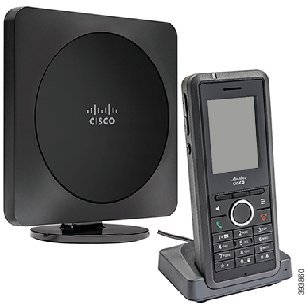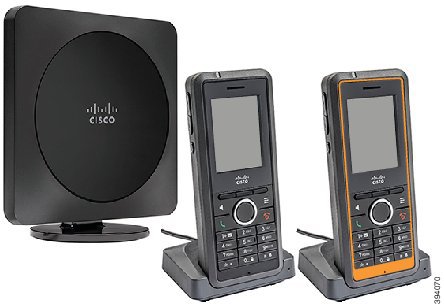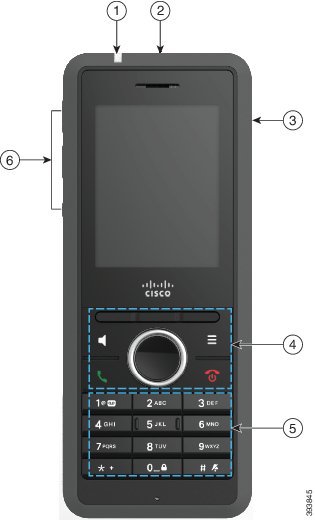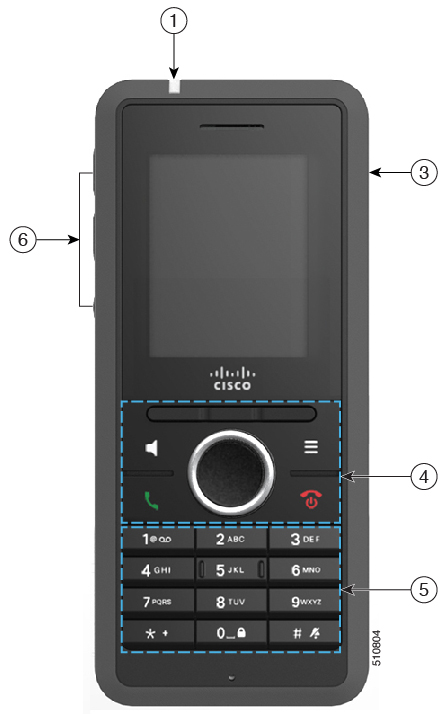- Home
- /
- Article

Your Cisco IP DECT 6800 series
 In this article
In this article Feedback?
Feedback?Learn about the DECT handset and base station.
Your handset
The Cisco IP DECT 6800 Series is made up of the Cisco IP DECT 210 Multi-Cell Base Station and the Cisco IP DECT Phone 6825 Handset. This system is designed for small and medium businesses, as well as larger organizations.
The Cisco IP DECT 6800 Series is made up of the Cisco IP DECT 210 Multi-Cell Base Station, the Cisco IP DECT Phone 6825 Handset, and the Cisco IP DECT Phone 6825 Ruggedized Handset. This system is designed for small and medium businesses, as well as larger organizations.
The Cisco IP DECT 6800 Series is made up of:
-
Cisco IP DECT 210 Multi-Cell Base Station
-
Cisco IP DECT 110 Single-Cell Base Station
-
Cisco IP DECT 110 Repeater
-
Cisco IP DECT Phone 6822 Handset - don't use
-
Cisco IP DECT Phone 6825 Handset
-
Cisco IP DECT Phone 6825 Ruggedized Handset


The Cisco IP DECT 110 Single-Cell Base Station and Cisco IP DECT 110 Repeater look identical to the Cisco IP DECT 210 Multi-Cell Base Station
The handsets communicate with the base station using Digital Enhanced Cordless Telecommunications (DECT) to provide call functions. The handset needs to be in the range of the base station to work.
The handsets communicate with the base station using Digital Enhanced Cordless Telecommunications (DECT) to provide call functions. The handset needs to be in the range of the base station to work. When the handset is out-of-range of the base station, you get an alert and you need to move within range for call functions.
If you need to use a handset in a volatile, dusty, or damp environment, you can use the Cisco IP DECT Phone 6825 Ruggedized Handset. This handset is IP65-rated, which means that the handset is sealed to protect it from dust and water.
In this document, the term phone means the handset and the term system means the handset, repeater, and base station.
Not all features may be supported by your handset. Contact your service provider for the supported features.
Buttons and hardware
Your handset has many buttons and hardware features that you will use regularly. Use the following figure and table to identify the important button and hardware features.
Your handset has many buttons and hardware features that you will use regularly. Use the following figure and table to identify the important button and hardware features. The figure shows the 6825 Handset, but the 6825 Ruggedized Handset is similar in appearance.
Your handset has many buttons and hardware features that you'll use regularly. Use the following figure and table to identify the important button and hardware features. The figure shows the 6823 Handset and 6825 Handset. The 6825 Ruggedized Handset is similar to 6825 Handset in appearance.



|
Item |
Name or Grouping |
Description |
|---|---|---|
|
1 |
Indicator light (LED) |
Indicator light—Use the light to identify states. You can configure the event that triggers the red, yellow, or green LED. |
|
2 |
Emergency button |
Emergency This button isn't available in the 6823 Handset. |
|
3 |
Headset port |
Headset port with cover |
|
4 |
Softkeys, handset control buttons (Speaker, Menu), Navigation cluster, call control buttons (Answer/Send, Power/End). |
Softkeys Speaker Menu Navigation cluster
Answer/Send Power/End |
|
5 |
Keypad |
Dial numbers and enter letters.
One
Asterisk
Zero
Pound
Use the keys 2 through 9 to enter letters and numbers. In some languages, additional characters may be present. |
|
6 |
Volume and Mute buttons |
Volume
Mute |


